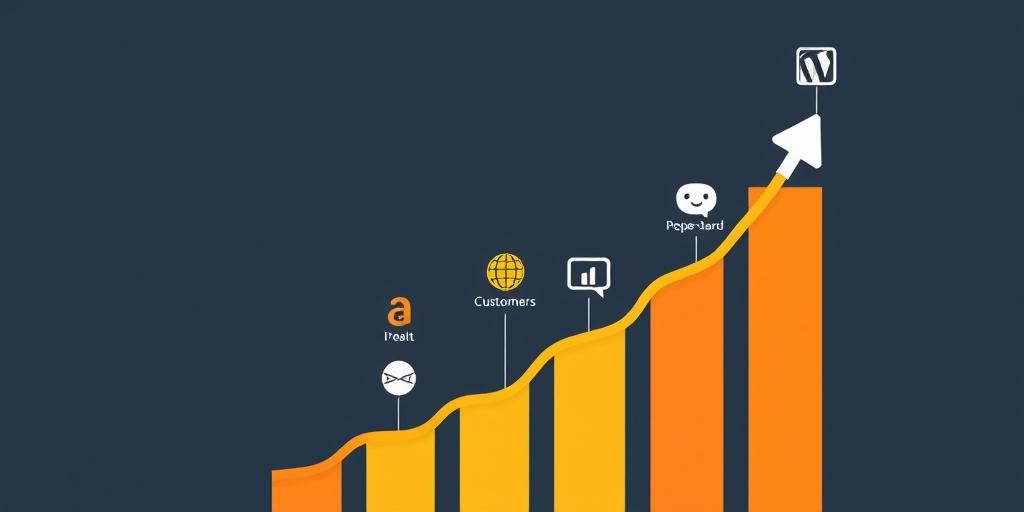Maximizing Customer Lifetime Value (LTV) in Your SaaS Business
Customer Lifetime Value (LTV) is a critical metric for any SaaS business. It represents the total revenue a business can expect from a single customer account over the entire relationship. Understanding and maximizing LTV is crucial for sustainable growth and profitability. This post will delve into the strategies and tactics to boost your SaaS LTV.
What is Customer Lifetime Value (LTV)?
LTV predicts the net profit attributed to the entire future relationship with a customer. It's a forward-looking metric that helps businesses understand the long-term value of acquiring and retaining customers. A higher LTV indicates that customers are finding value in your product and are likely to remain loyal for a longer period.
Why is LTV Important for SaaS Businesses?
- Predictable Revenue: A strong LTV provides a clear picture of future revenue streams, enabling better financial planning and forecasting.
- Informed Decision-Making: LTV insights guide decisions related to customer acquisition costs (CAC), marketing spend, and product development.
- Sustainable Growth: Focusing on increasing LTV leads to more sustainable and profitable growth by retaining valuable customers.
- Improved Customer Relationships: Strategies to enhance LTV often involve improving customer experience and building stronger relationships.
Key Strategies to Maximize SaaS LTV
1. Enhance Customer Onboarding
A smooth and effective onboarding process is crucial for setting the stage for a long-term relationship. Ensure that new users quickly understand the value of your product.
- Personalized Onboarding: Tailor the onboarding experience to the specific needs and use cases of different customer segments.
- Interactive Tutorials: Guide users through key features and functionalities with interactive tutorials and walkthroughs.
- Dedicated Support: Provide readily available support during the initial setup phase to address any questions or issues promptly.
2. Focus on Customer Success
Customer success is about proactively helping customers achieve their desired outcomes using your product. A proactive approach to customer success increases product adoption and reduces churn.
- Regular Check-ins: Schedule regular check-ins with customers to understand their evolving needs and challenges.
- Value-Added Content: Provide valuable content such as webinars, tutorials, and best practices guides to help customers maximize the value they receive.
- Dedicated Customer Success Managers: Assign dedicated customer success managers to key accounts to provide personalized support and guidance.
3. Improve Customer Engagement
Engaged customers are more likely to remain loyal and increase their spending over time. Strategies to improve customer engagement include:
- Feedback Loops: Establish feedback loops to continuously gather customer insights and use them to improve your product and services.
- Community Building: Foster a community where customers can connect with each other, share best practices, and provide support.
- Personalized Communication: Communicate with customers on a personal level, using data to tailor your messaging and offers to their specific needs.
4. Reduce Customer Churn
Reducing churn is one of the most effective ways to increase LTV. Identify the reasons why customers are leaving and take steps to address those issues.
- Churn Analysis: Analyze churn data to identify patterns and root causes of customer attrition.
- Proactive Intervention: Implement proactive measures to identify at-risk customers and intervene before they churn.
- Exit Surveys: Conduct exit surveys to understand why customers are leaving and use the feedback to improve your product and services.
5. Upselling and Cross-selling
Upselling involves persuading customers to purchase a more expensive version of your product, while cross-selling involves offering complementary products or services. Both strategies can significantly increase LTV.
- Identify Opportunities: Identify opportunities to upsell or cross-sell based on customer usage patterns and needs.
- Value-Based Offers: Present upselling and cross-selling offers in a way that highlights the additional value customers will receive.
- Targeted Promotions: Offer targeted promotions and incentives to encourage customers to upgrade or purchase additional products.
6. Optimize Pricing Strategies
Your pricing strategy can significantly impact LTV. Experiment with different pricing models to find the one that maximizes revenue while still providing value to customers.
- Value-Based Pricing: Price your product based on the value it provides to customers.
- Tiered Pricing: Offer different pricing tiers to cater to different customer segments and use cases.
- Usage-Based Pricing: Charge customers based on their usage of the product.
Calculating Customer Lifetime Value
There are several ways to calculate LTV, but one common formula is:
LTV = (Average Revenue per Account) x (Customer Lifespan) - (Customer Acquisition Cost)
- Average Revenue per Account: The average revenue generated from each customer account over a specific period.
- Customer Lifespan: The average length of time a customer remains with your business.
- Customer Acquisition Cost (CAC): The cost of acquiring a new customer.
Conclusion
Maximizing Customer Lifetime Value is essential for the long-term success of any SaaS business. By focusing on customer onboarding, customer success, engagement, churn reduction, upselling, and pricing strategies, you can increase LTV and drive sustainable growth. Regularly monitor and analyze your LTV to identify areas for improvement and make informed decisions that benefit both your customers and your business.









